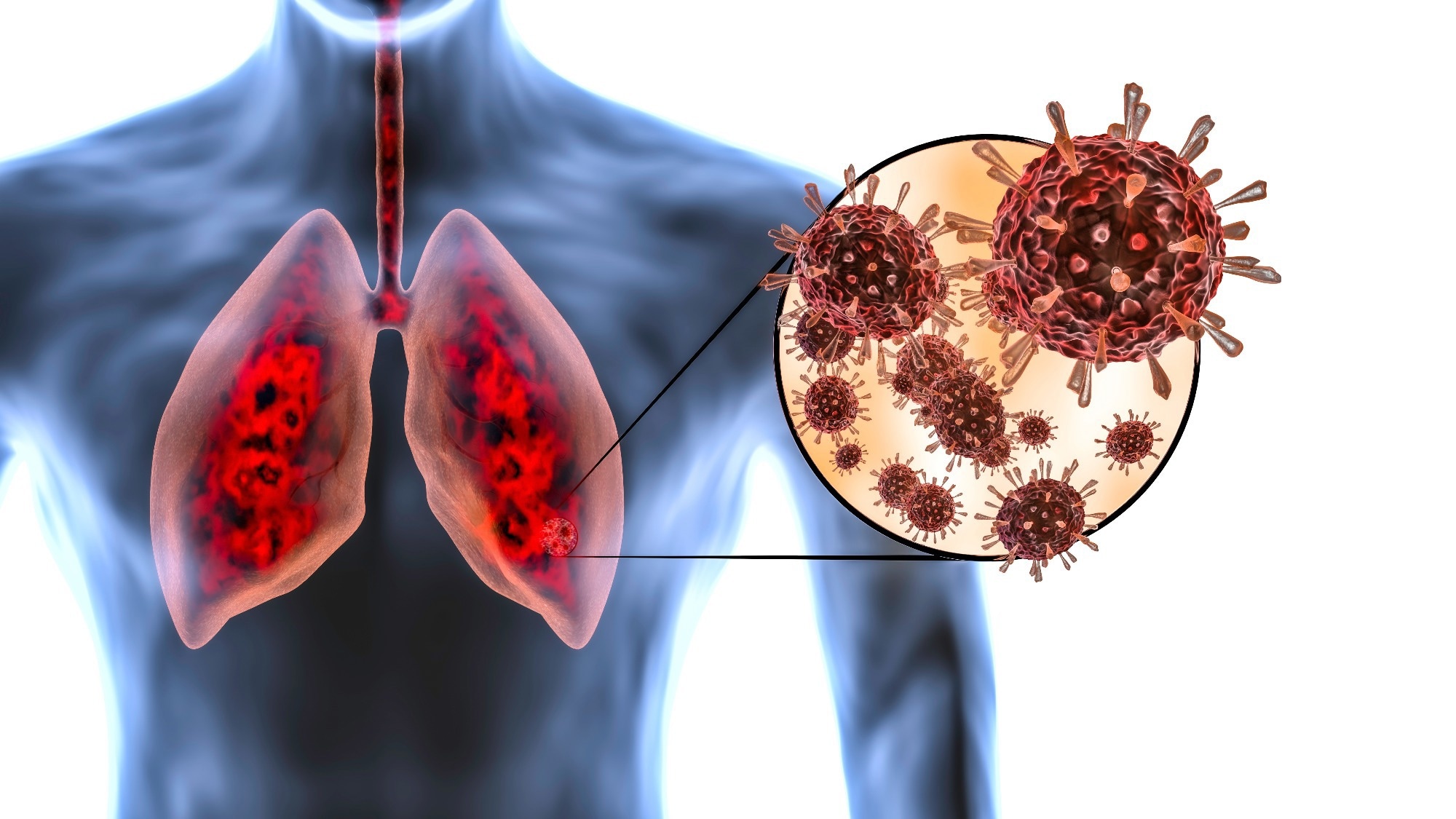In a recent study posted to the Preprints with The Lancet SSRN* server, researchers evaluated the impairment of pulmonary function in individuals suffering from post-acute sequelae of coronavirus disease 2019 (COVID-19) (PASC) or long coronavirus disease (long COVID) symptoms after severe acute respiratory syndrome coronavirus 2 (SARS-CoV-2) infections.
 Study: One-Fourth of COVID-19 Patients Have an Impaired Pulmonary Function after 12 Months of Illness Onset. Image Credit: MarcinWojc / Shutterstock
Study: One-Fourth of COVID-19 Patients Have an Impaired Pulmonary Function after 12 Months of Illness Onset. Image Credit: MarcinWojc / Shutterstock

 *Important notice: Preprints with The Lancet / SSRN publishes preliminary scientific reports that are not peer-reviewed and, therefore, should not be regarded as conclusive, guide clinical practice/health-related behavior, or treated as established information.
*Important notice: Preprints with The Lancet / SSRN publishes preliminary scientific reports that are not peer-reviewed and, therefore, should not be regarded as conclusive, guide clinical practice/health-related behavior, or treated as established information.
Background
Respiratory infections such as Severe Acute Respiratory Syndrome (SARS) and Middle East Respiratory Syndrome (MERS) have been associated with reduced pulmonary function for months after recovering from the infection. While COVID-19 vaccines have successfully limited the severity and spread of SARS-CoV-2 infections, a significant number of severe COVID-19 patients continue to experience COVID-19 symptoms for months after recovering from the infection.
Fatigue, myalgia, and dyspnea are commonly reported symptoms from long COVID or PASC patients. Recent studies indicate that lower diffusing capacity for carbon monoxide (DLCO) and an associated reduction in the alveolar volume is the prevalent lung abnormality in PASC patients. These findings are primarily based on hospitalized patients, and persistent impairments with pulmonary functions have been linked to prolonged hospitalization, ventilator use, and intensive care unit admissions. While studies have reported improvement in pulmonary function with time, the impact of COVID-19-related pulmonary function impairments on the overall quality of life and associations with other COVID-19 symptoms remains unclear.
About the study
In the present study, the researchers conducted a longitudinal analysis of a prospective cohort to understand pulmonary function kinetics in hospitalized and non-hospitalized COVID-19 patients. They also evaluated pulmonary function impairment and its relationship to other PASC symptoms and health-related quality of life (HRQL) for varying severities of SARS-CoV-2 infections.
The RECoVERED cohort in this study comprised non-hospitalized and hospitalized individuals between the ages of 16 and 85 with SARS-CoV-2 infections confirmed from positive polymerase chain reaction (PCR) tests. In addition, participants for whom at least one follow-up measurement of pulmonary function was available were included in the study.
Information on the occurrence and duration of PASC symptoms was collected using a questionnaire, and medical history and sociodemographic data were obtained from interviews and medical records. During the acute phase of SARS-CoV-2 infections, physical measurements such as respiratory rate, oxygen saturation, and heart rate were collected during enrolment, as well as one week and one month after enrolment.
Pulmonary function was measured based on DLCO at multiple time points after the onset of COVID-19. Other measured parameters included forced vital capacity, pulmonary diffusion capacity, vital capacity, forced expiratory volume in one second, and alveolar volume. The DLCO measurements were corrected based on hemoglobin measurements.
A self-administered health survey questionnaire was used to assess HRQL at one and 12 months of follow-up. This questionnaire assessed well-being, functional status, and overall health.
Results
The findings reported that at 12 months of follow-up, one-fourth of the participants continued to have impaired pulmonary function, with mild, moderate, and severe SARS-CoV-2 infections accounting for 11%, 22%, and 48% of these cases, respectively. While the DLCO values improved over time, three or more comorbidities and severe or critical initial SARS-CoV-2 infections were associated with decreased pulmonary function improvement rates. However, the HRQL values showed progressive improvement irrespective of pulmonary function impairment.
Parameters such as vital and forced vital capacity also showed improvements over time in patients with severe or moderate initial SARS-CoV-2 infections, indicating that COVID-19-associated lung damage could be reversed. Diffusion capacity abnormality was the predominantly observed pulmonary function impairment for up to a year, and there were significant differences in diffusion capacity across COVID-19 severities.
While studies have reported physical and pulmonary function impairments and reduction in the quality of life associated with muscle weakness after acute lung injuries, the authors discussed that the findings of the present study were in contrast to previous studies that reported persistent symptoms and reductions in HRQL a year after recovering from COVID-19. One of the limitations of this study was the inability to assess the pulmonary function impairments specifically associated with SARS-CoV-2 infections due to the unavailability of pulmonary function testing results before the onset of COVID-19.
Conclusions
Overall, the results suggested that 25% of COVID-19 patients experienced impaired pulmonary function up to a year after recovering from the initial SARS-CoV-2 infection. However, this impairment did not seem to impact the health-related quality of life significantly. Furthermore, the single-breath diffusion capacity parament differed significantly according to the severity of the initial SARS-CoV-2 infection, potentially explaining the slower recovery rate of patients with severe COVID-19.

 *Important notice: Preprints with The Lancet / SSRN publishes preliminary scientific reports that are not peer-reviewed and, therefore, should not be regarded as conclusive, guide clinical practice/health-related behavior, or treated as established information.
*Important notice: Preprints with The Lancet / SSRN publishes preliminary scientific reports that are not peer-reviewed and, therefore, should not be regarded as conclusive, guide clinical practice/health-related behavior, or treated as established information.
Journal reference:
- Preliminary scientific report.
Hugo D.G van Willigen, Elke Wynberg, Anouk Verveen, Maartje Dijkstra, Bas J. Verkaik, Orlane J.A. Figaroa, Marianne C. de Jong, Annelou van Veen, Agata Makowska, Nelleke Koedoot, Pythia T. Nieuwkerk, Anders Boyd, Maria Prins, Godelieve J. de Bree, Menno D. de Jong, and Joost G. van den Aardweg, and the RECoVERED Study Group: One-Fourth of COVID-19 Patients Have an Impaired Pulmonary Function after 12 Months of Illness Onset. SSRN. 2023, Available at SSRN: https://ssrn.com/abstract=4366836 http://dx.doi.org/10.2139/ssrn.4366836